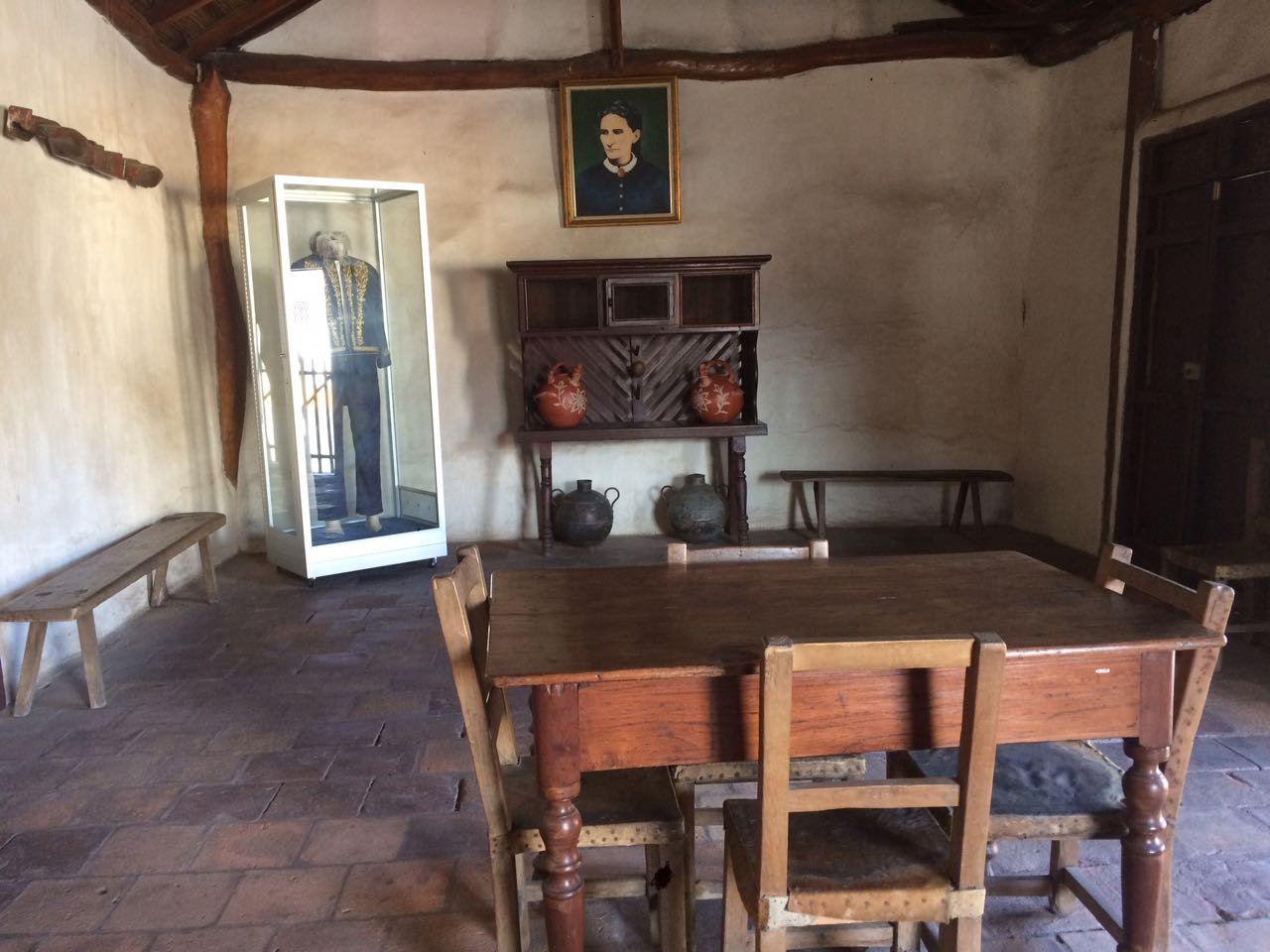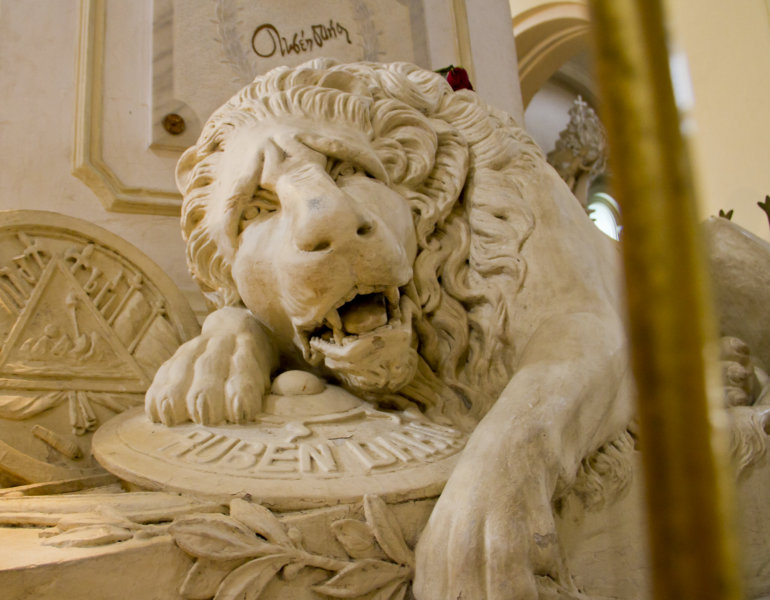

Rubén Darío: The Prince of Spanish Letters
Felix Rubén García Sarmiento, better known as Rubén Darío, was born on January 18, 1867, in Metapa, Nicaragua, and passed away on February 6, 1916, in León, Nicaragua. He is recognized as the leading figure of literary modernism in the Spanish language and has left a lasting influence on 20th-century poetry in the Hispanic world. Because of this, he was awarded the title of "Prince of Castilian Letters."


Biography
From the very beginning, Darío's life was marked by complex circumstances. He was the first child of Manuel García and Rosa Sarmiento, who had a tumultuous relationship. Despite family difficulties, Darío displayed an early talent for literature. By the age of three, he could already read, and at thirteen, he published his first poem in a newspaper. During his youth, he was influenced by Spanish poets of the time and later by the work of Victor Hugo.
In 1881, he moved to Managua, where he continued his journalistic activities. Later, he traveled to El Salvador, where he adapted the French alexandrine verse into Castilian metrics, an innovation that would become a distinctive feature of modernism. After facing economic and health challenges in El Salvador, he returned to Nicaragua.
In 1886, Darío traveled to Chile, where, despite facing economic difficulties, he managed to publish his first book of poems, "Abrojos." However, it was "Azul..." the book that solidified his fame and marked the beginning of the modernist literary revolution.
Throughout his life, Darío traveled extensively, working as a correspondent and diplomat. These journeys allowed him to interact with prominent literary and political figures of the time. In Argentina, he published "Los raros" and "Prosas profanas y otros poemas," further cementing his reputation as a leader of the modernist movement.
Legacy and Contribution
Rubén Darío is not only known for his poetry but also for his ability to blend European styles with Latin American themes. His influence on 20th-century Hispanic poetry is undeniable, and his legacy continues to thrive in contemporary literature.
Early Years and Modernist Poetry: Darío began his literary career at a young age, and by the age of 14, he had already published his first poems. His style evolved and matured, and in 1888, with the publication of "Azul," he became a prominent figure in literary modernism.


This literary movement emphasized beauty, musicality, and the exploration of new poetic forms. His poetry was characterized by the use of exquisite metaphors, attention to aesthetics, and the incorporation of elements from classical culture and mythology. His verses were rich in imagery and sounds, creating a sensory experience for the reader.
Modernism, with Darío at its helm, left a profound mark on literature. His followers, known as "darianos," continued his legacy. Authors such as Pablo Neruda, Jorge Luis Borges, Gabriela Mistral, and Octavio Paz drew inspiration from his work. Darío's influence extended through decades and continents.
Travels and International Recognition: Rubén Darío traveled extensively throughout the Americas and Europe, deeply influencing his work. His journeys took him to places like Chile, Argentina, Spain, France, and the United States. In Spain, he established relationships with other notable writers and poets of the time.
Iconic Works: Darío is known for iconic works such as "Cantos de vida y esperanza" (1905) and "Prosas profanas" (1896). His poems celebrate the beauty of nature, explore spirituality, and reflect on universal themes like love and death. His modernist poetry marked a turning point in Spanish-language poetry and continues to be studied and admired worldwide.


Cultural Legacy: Rubén Darío's influence extends beyond literature. He was an influential journalist and diplomat in his lifetime, and his political and cultural writings also left a lasting impact. His work helped solidify the Spanish language as a tool for artistic and stylistic expression.
Tributes and Recognitions: Over the years, Darío has received numerous posthumous tributes and recognitions. His hometown, now called Ciudad Darío, is named in his honor. Additionally, Poet's Day is celebrated in Nicaragua every February 6, the anniversary of his death, in commemoration of his legacy.
Rubén Darío: An Eternal Literary Icon: Rubén Darío is much more than a poet; he is a literary icon whose impact endures in Hispanic literature and culture. His ability to transform words into works of art, his exploration of beauty, and his influence on generations of writers make him a true Prince of Castilian Letters.
Casa Museo y Archivo Ruben Dario


If you want to learn more about Ruben Darío, you can visit the Casa Museo y Archivo Ruben Darío in León. Here, you can get up close to the life and work of the eminent poet. Its rooms feature furniture from the era, preserving the bed in which he spent his final moments of life. Also on display is the poet's diplomatic attire, complete with gloves, hat, and sword. The library houses 2,500 volumes, including the works of Rubén Darío and other Nicaraguan and Hispano-American poets.
The museum is located three blocks west of the central park, on Calle Real.
Ciudad Darío.


Photograph of Rubén Darío's former house.
In this place, Rubén Darío's house has been preserved and is currently a museum. It has retained its original style, including the old adobe walls. The 19th-century decor provides visitors with an authentic experience of life during that time. The museum displays photographs, paintings, and objects from the poet's family, along with information about his life. The amphitheater, built a hundred years after his death, hosts annual cultural events in his honor. Visitors can also purchase books with Darío's poems. Entrance fees vary based on age and nationality and include a guide to learn more about the poet's house.
The house is located directly across from Enitel in Ciudad Darío.
León Cathedral
Since his death in 1916, the remains of the poet rest in the main chamber of the Basilica Cathedral of the Assumption in León, guarded by the marble sculpture of a lion with a sad expression.


Photograph of the place where the remains of Rubén Darío rest.
Ruben Darío: Monuments and Symbols
The Rubén Darío Theater: The Rubén Darío Theater in Nicaragua is an iconic cultural venue located in Managua. Inaugurated in 1969, it pays tribute to the poet Rubén Darío. Its modern architecture and capacity for 1,200 spectators make it a vital center for the performing arts, hosting theatrical productions, concerts, and culturally significant events on a national and international level.
C$100 Cordobas Banknote: The banknote features a photograph of the monument to Rubén Darío, located in the central park of Managua.
Rubén Darío Plaza in León: In 2020, the Rubén Darío Plaza was inaugurated in León, featuring a statue of the poet. The statue is an imposing 7-meter-tall bronze figure representing the poet in his characteristic attire of the era, with credentials and a hat in one hand and gloves in the other. The sculpture includes a bronze medallion recovered from one of the previous monuments dedicated to Darío. The surroundings are adorned with natural grass and have an integrated irrigation system that complements the monument in the plaza.
Mark Twain and Rubén Darío in Rivas: In San Juan del Sur, a prominent sculpture represents Rubén Darío and Mark Twain, two great writers. Designed by the master Arnoldo Guillén on the sesquicentennial of Darío's birth and Twain's visit to Nicaragua, the artwork is located at the city's pier. Both authors are seated at opposite ends of a bench, holding books and looking at each other. Twain was inspired by his journey through Nicaragua to write chronicles praising the country's beauty. The monument received the Inifom award for its preservation and beauty.
October 6th, 2023